The era of the Muslim regime began in 711 AD and lasted for almost 800 years. It was composed of the governance of various rulers that attempted to reform the socially unstable Spain on different levels.

This era started with the expedition of 10300 Muslims under the command of the Berber leader Tariq Bin Ziyad and his companions, as requested by Count Julian against the Visigoth King Roderic. Later, this expedition led to the conquest of Spain with the powerful administration of Muslims in Andalusia, Southern Spain. To be noted, these Muslims included both Arabs and Berbers, and later, their generations in Al-Andalus, referred to as Andalusians.

However, this wasn’t merely a rule based on power, as it’s often portrayed in history. Just as the term “Moor” is used to refer to the Muslim rulers (and population) of Spain, in a disrespectful manner. Therefore, it is inappropriate to use this term for them.
PERSONAL AND SOCIAL DEVELOPMENT IN SPAIN UNDER MUSLIM RULE:
The very first reform of society was the enforcement of the system of justice. Generally, the idea of justice covers the vast area of human and social life including trade and economics, law enforcement, cultural and personal freedom, management, and opportunities for personal and social development. That system of justice was not a new thing for locals, as they were exposed to Arab culture before, yet it was the first time that they were under their rule. After the conquest, the social classes in Spain were divided on the bases of religion into three major groups, Muslims, Christians, and Jews and each of them had the right to exist without a compromise over their beliefs. Despite this, the rate of acceptance of Islam as a faith among locals was high, yet it wasn’t mandatory for them. The locals were liberated from the excessive taxation except for Zakat (Muslims had to pay tax once a year) and Jizya (non-Muslims are granted the right of dhimmi/zimmi who have to pay tax once a year, but are provided with equivalent treatment as Muslims) and enjoyed a variety of careers of their choice which lead to a thriving society.
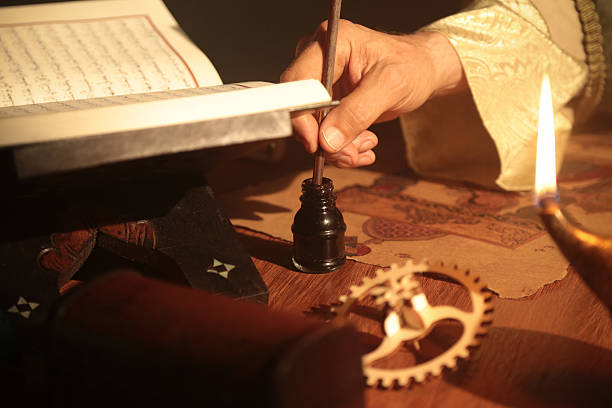
POLITICAL REFORMS:
To make sure that justice is provided to every part of the state, political reforms are required in the society. The Following are the most influential political reforms in Andalusian society. “Tribunal of the Water” in Valencia is a system of officials that deals with the irrigation and water management among the farmers in the Valley of Valencia. According to the history, it was established under the rule of Caliph Abd Ar Rehman III and Al Hakam II in 960 CE which is still functioning even after the removal of other Andalusian institutes.
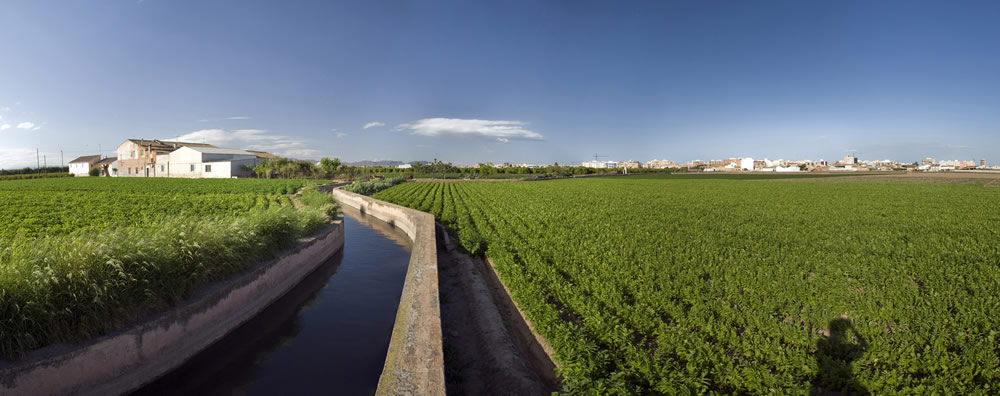
Abd ar Rehman I introduced internal reforms, including the establishment of judiciary under a senior judge (Qadi) division of Spain in 6 military provinces and construction of schools, Mosques, and hospitals in Cordoba.
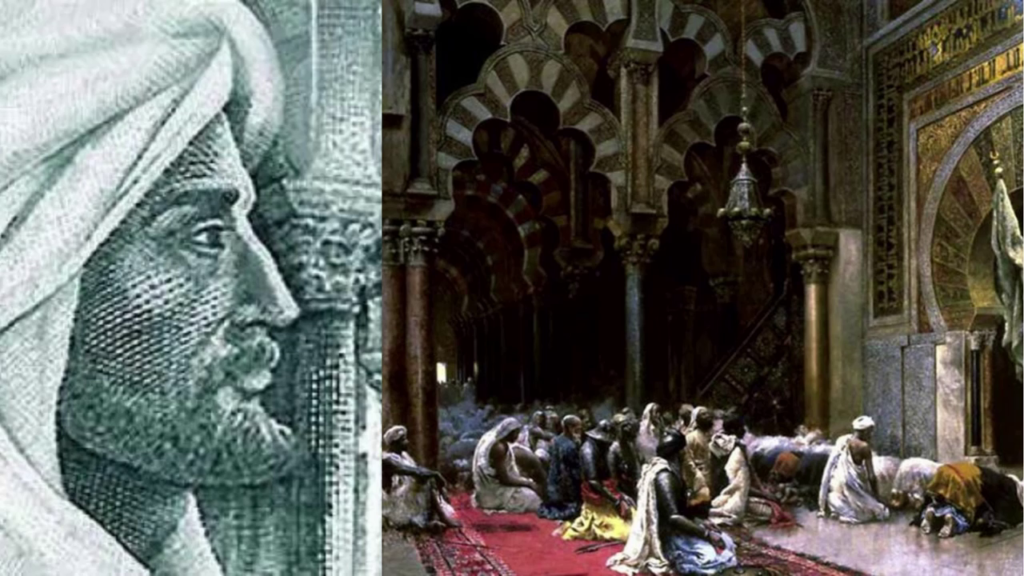
The era of Abd ar Rehman III is said to be the greatest of all Ummayad rulers. He changed Cordoba into the most developed city of Europe, almost equivalent to Muslim Baghdad in terms of architects, craftsmen and scholars, in a brief time.


He also established the royal city of Madina Al-Zahra, which is now declared as UNESCO world heritage site for its skilled ancient beauty. Moreover, under his rule, the Muslim navy had a hold in the Mediterranean for a long time. Which led to his successful diplomacy in Southern Europe and Northern Africa and led to a strong government in the region.
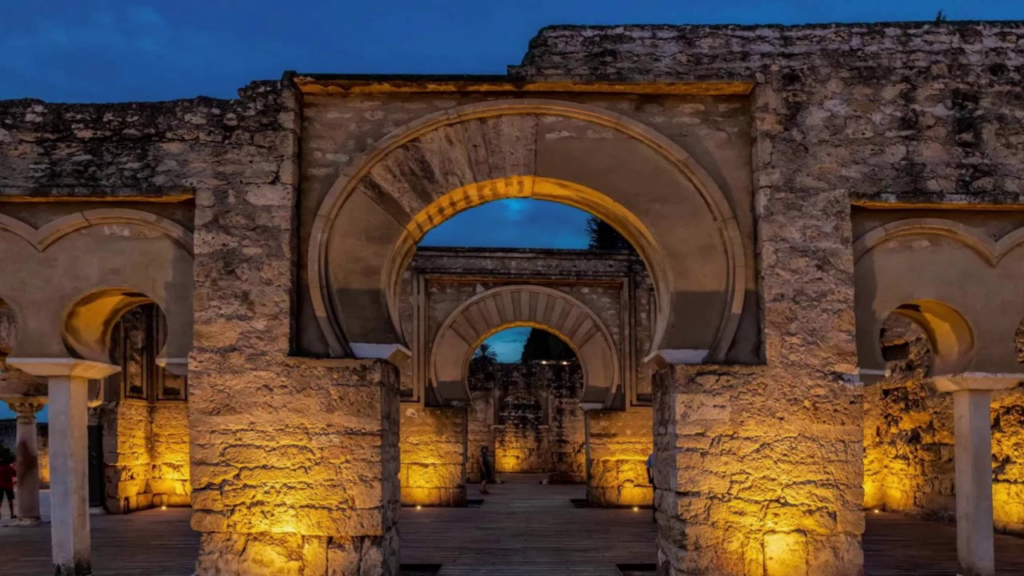
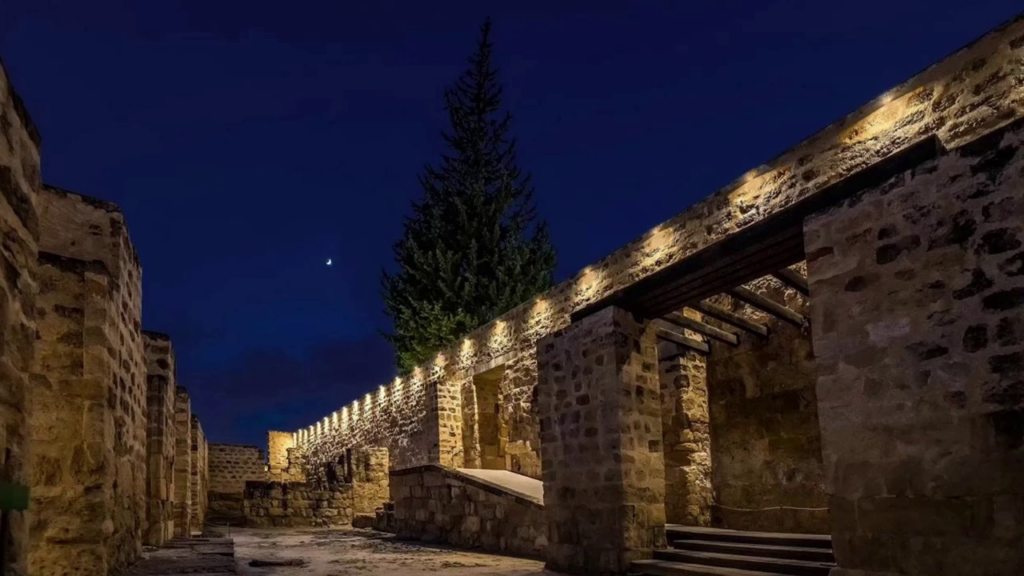
DISCOVERY AND USAGE OF PAPER IN THE MUSLIM WORLD AND ITS INFLUENCE ON ANDALUS:
The Muslim governments of that time, opened the learning centers for collecting the works from Ancient Greeks, Romans, Persians and others. Arabic became one of the most spreading languages at that time. Therefore, these all works were translated into Arabic language. Caliph al-Mamun opened the “House of Wisdom” in Baghdad in 870 AD. The newly arrived technology of paper helped them to multiply their work from Baghdad to Andalusia (Muslim Spain). The citizens living in Muslim Spain took active part in those translation work including Muslims, Jews and Christians.

The scholars living in the cities of Cordoba, Toledo, Seville and Granada shared their thoughts and ideas over the knowledge and in this way, a learning society was born on the basis of knowledge which brought a boom of knowledge later. Moreover, many scholars began to write their own original content on the basis of research they were doing.
DISCOVERIES AND NOTABLE WORKS OF ANDALUSIAN SCHOLARS:
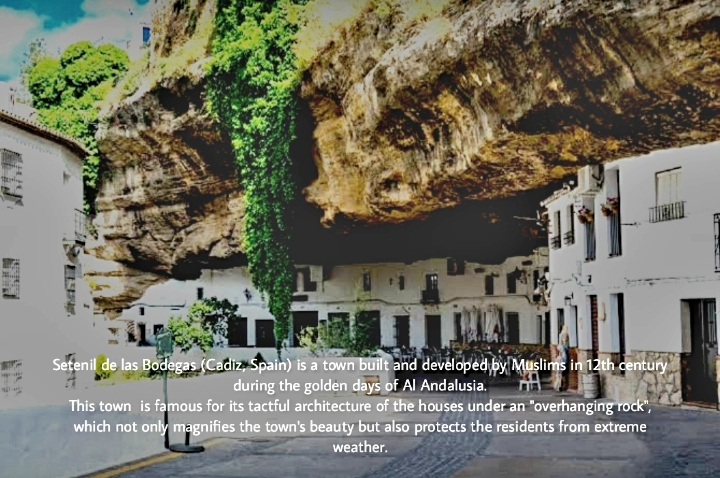
When communities are at peace, individuals prosper. That’s why different aspects of Andalusian society elevated to a stable progress. Refined and reformed Andalusians provided the world with most valuable pieces of research and useful gadgets in the fields of science, theology, agriculture, urban planning and management, military development, music, arts and architecture; which is now considered as an original part of Spanish culture.
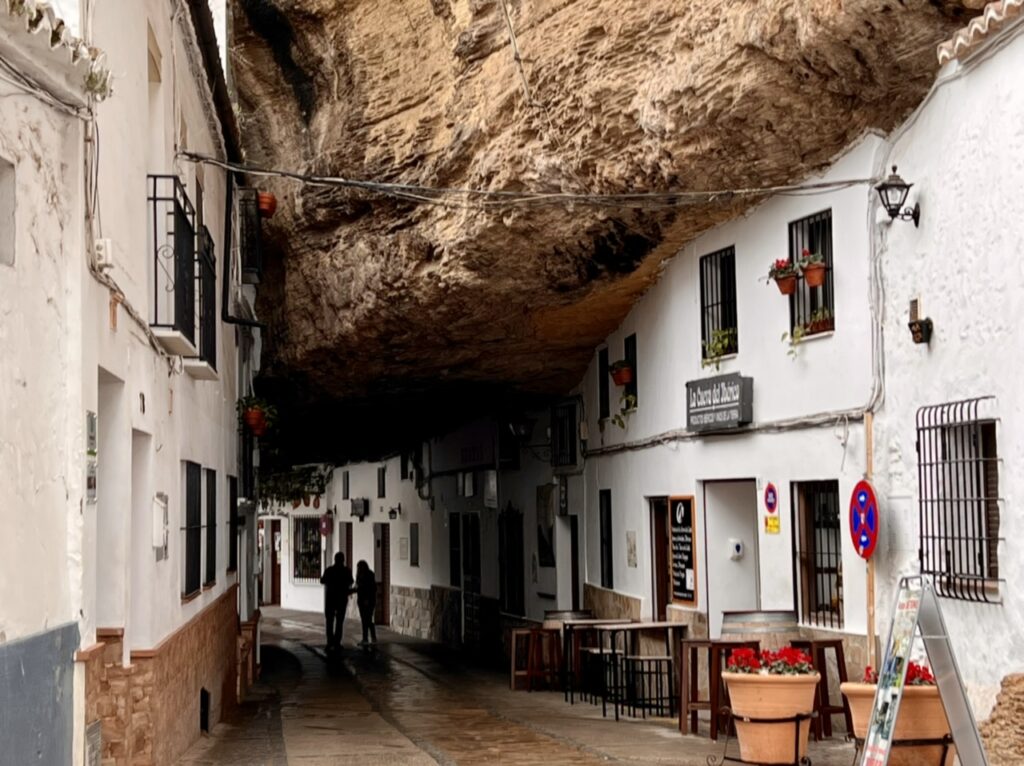
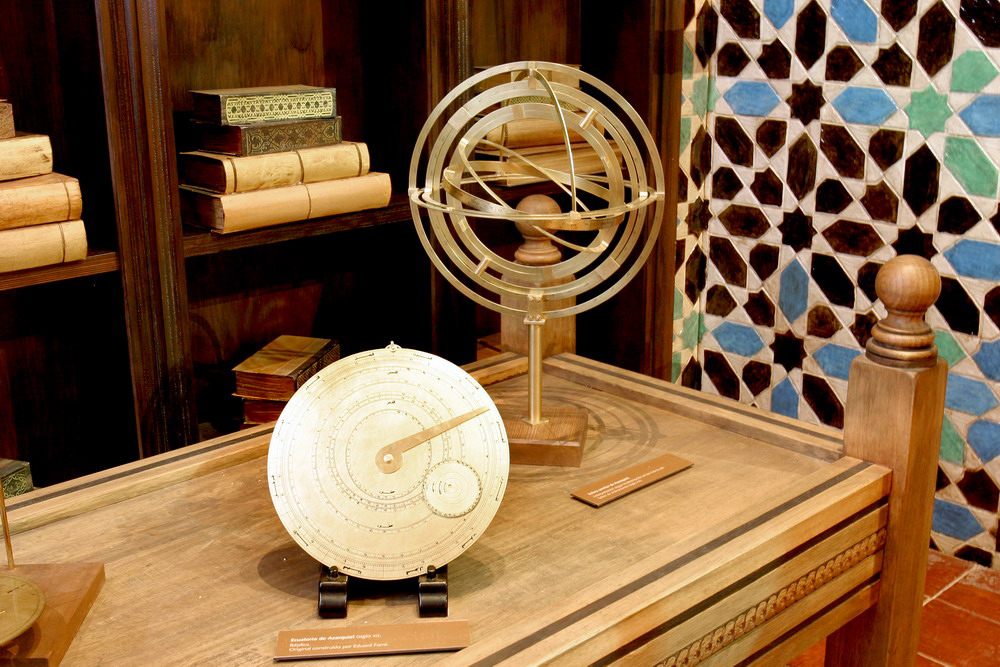
Some of these are as follows.
Ibn Bassal was an Andalusian agriculturalist who wrote about the types of soil and how to manage them for the best results. He also described the structure and engineering of a hydraulic system made of wells and pumps. In his book “the book of agriculture” he mentions that orange wasn’t originally as sweet and delicious as it is today, Andalusians discovered a way to change its bitter taste by grafting the orange trees and planting Narcissus under each tree.
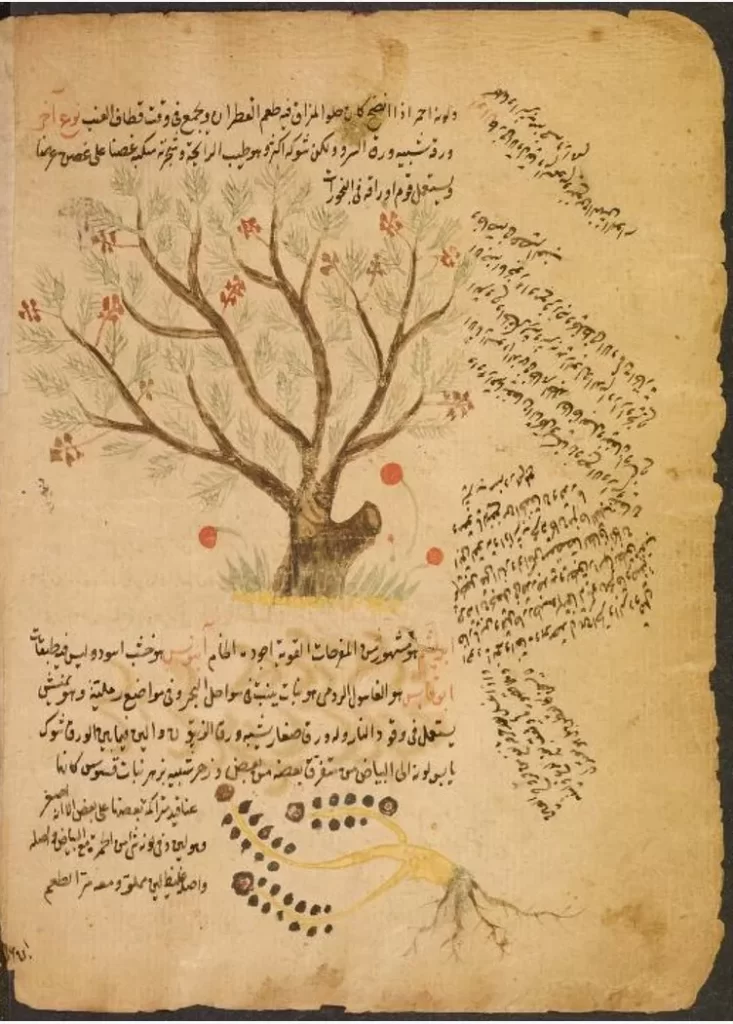
In the field of mathematics, Andalusians were skilled in using a number system that includes 9 numbers and one “zero”. The hourglass and clock candle were found, created by Muslims, along with a detailed book about sundials. Astrolabe was also used in that era.

The armillary globe is a creation of Ibrahim ibn sa’id al Sahli which shows the position of 1004 stars in the group of 47 constellations.
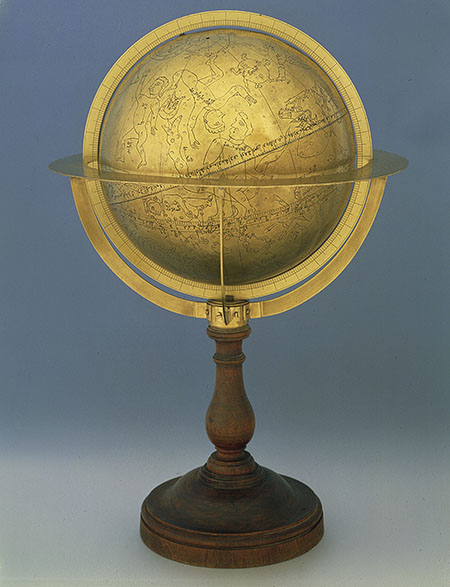
Al Zahrawi, is the famous Arab Andalusian physician and chemist, his work was a key source of information of medical knowledge for medieval doctors. His surgical instruments are still used in surgeries with a few improvements.
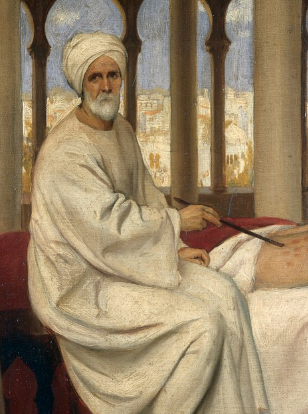
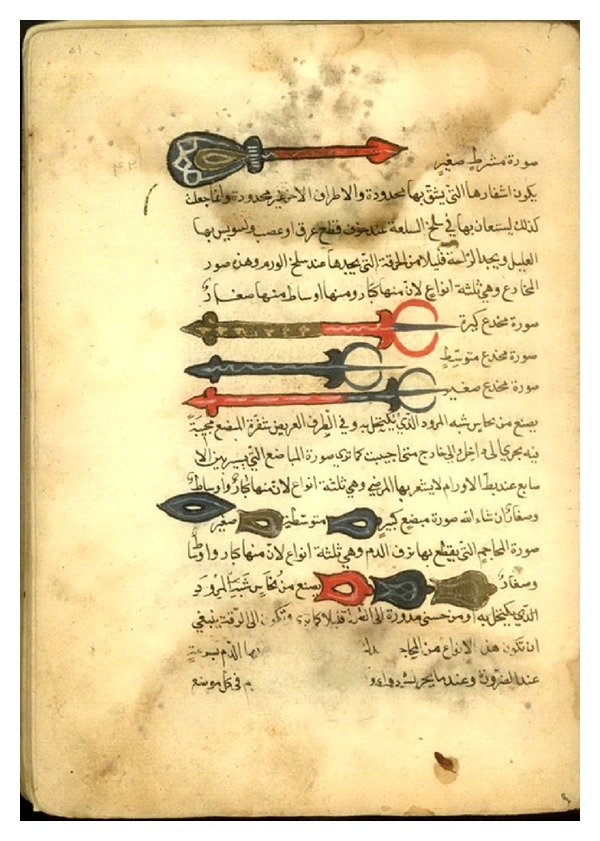
Abu Ishaq Al-Zarqali introduced a water clock also known as Azrachel, which was capable of determining hours of day and night and also indicating the days of lunar months.
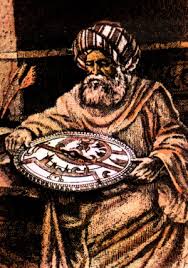
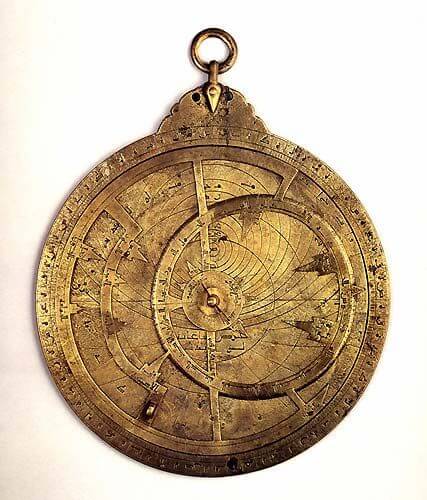
Ibn e Rushd also known as Averroes has written books on versatile topics including medicine, logic and philosophy in all its branches, including natural philosophy, astronomy, metaphysics, psychology, politics, and ethics.

Al Bitruji was the first astronomer to present a non-Ptolemaic astronomical system as an alternative to Ptolemy’s models, with the planets borne by geocentric spheres. The crater Alpetragius on the Moon is named after him.
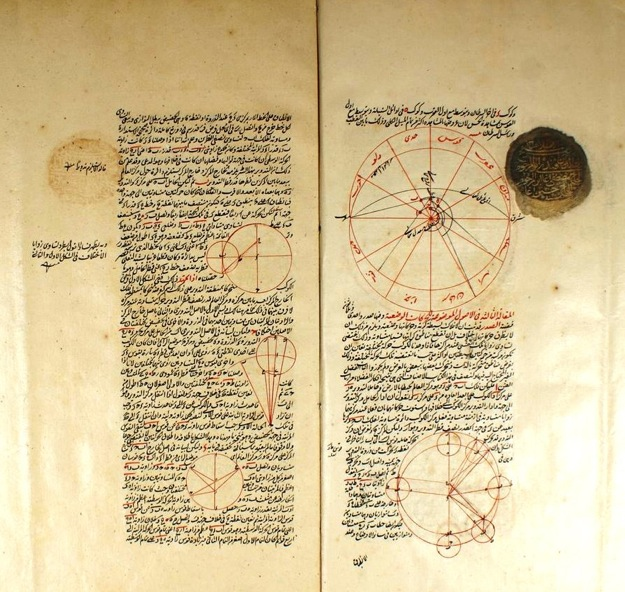
CULTURAL GIFTS FROM THE MUSLIM RULERS:
ALHAMBRA PALACE:

Al-Hambra palace located in the city of Granada, Southern Spain, is a UNESCO world heritage site as more than 5000 tourists visit this palace per day. One of the most visited tourist places in Spain due to its exclusive architecture, gardens, water flows, beautiful calligraphy, mesmerizing location and some of the best-preserved Islamic art and architecture in the world.
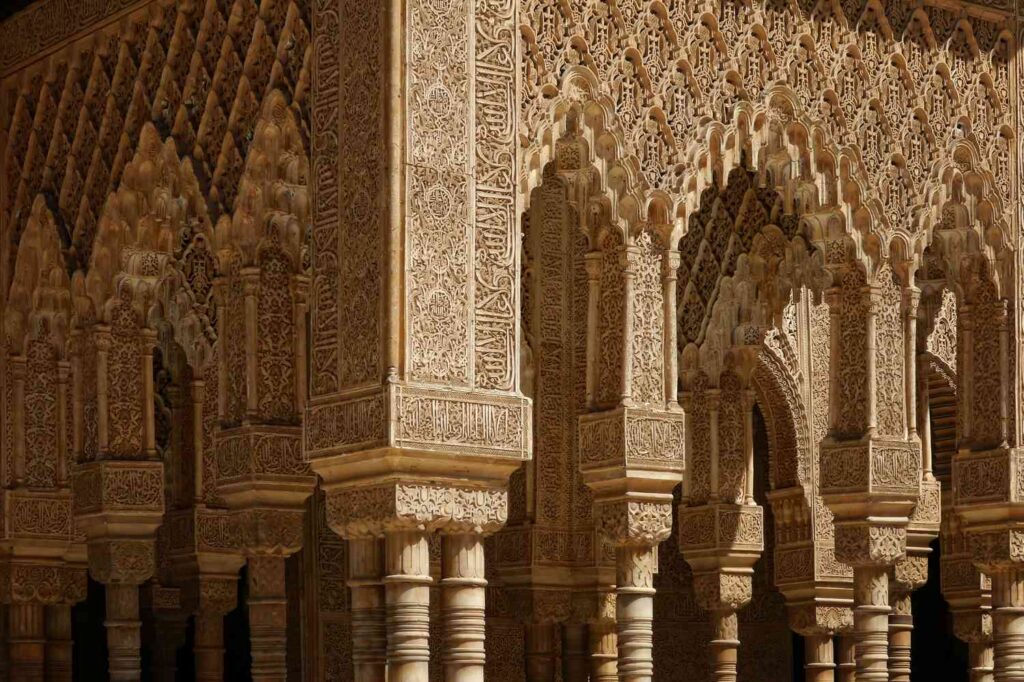
Al-Hambra palace was built from red bricks therefore, it was given the name “Al-Hambra” as in Arabic language Al-Hambra means ‘The red one”. The construction of the palace itself was one of the masterpieces of its time.
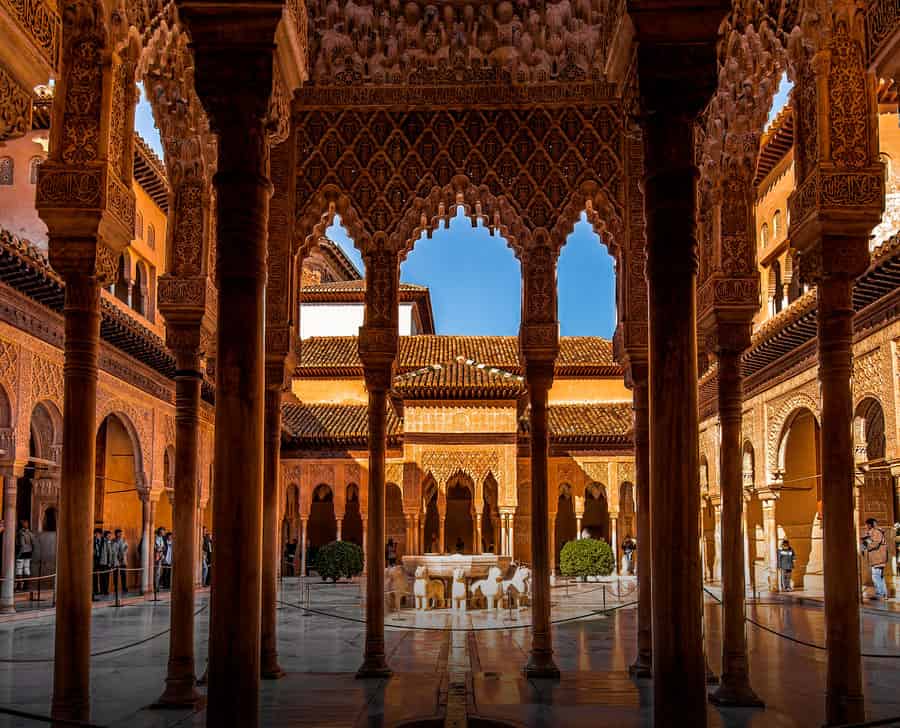
The clean running water was designed in such a way that it passed through the gardens, fulfilling all water needs and then falling into the rivers.
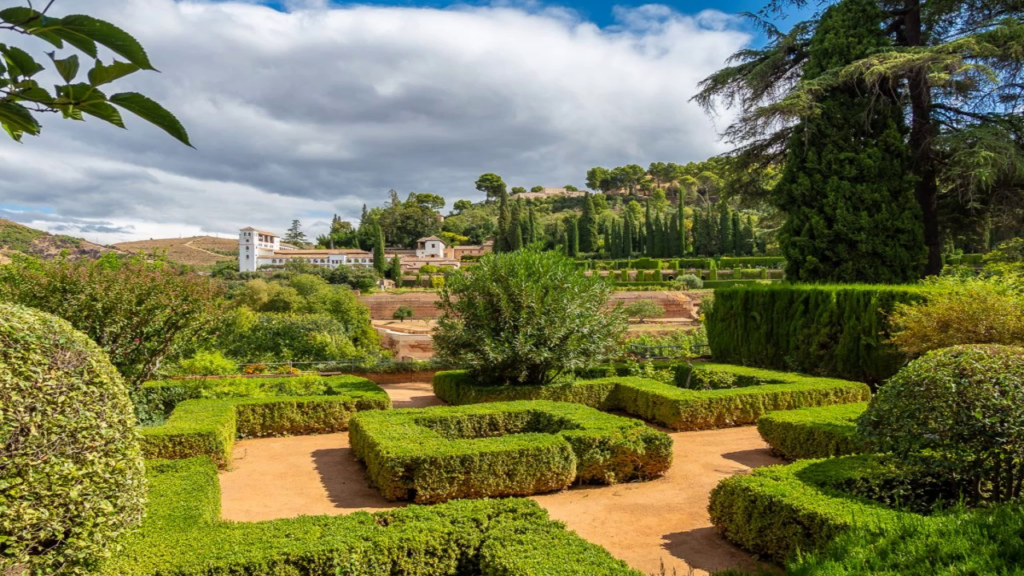
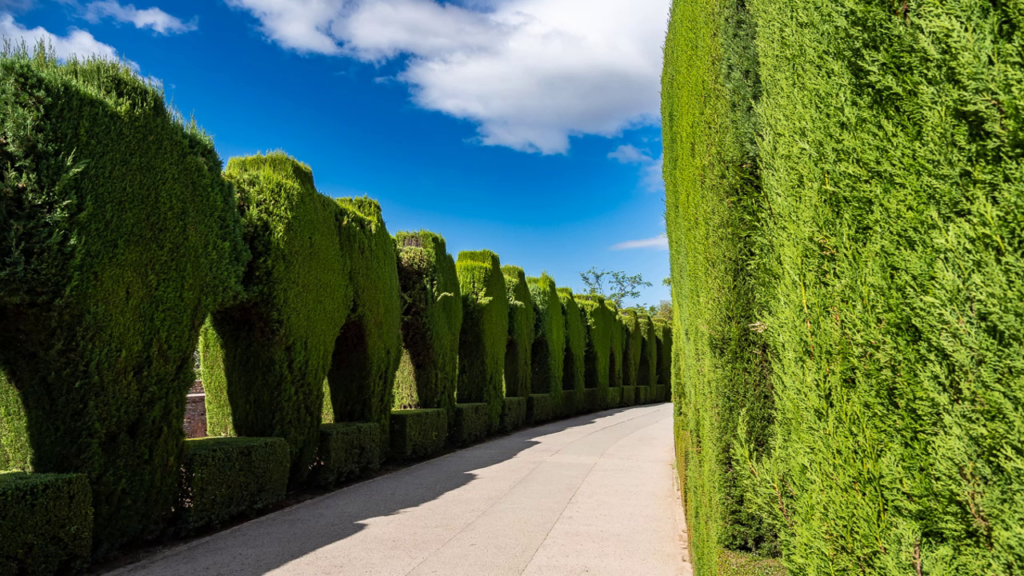
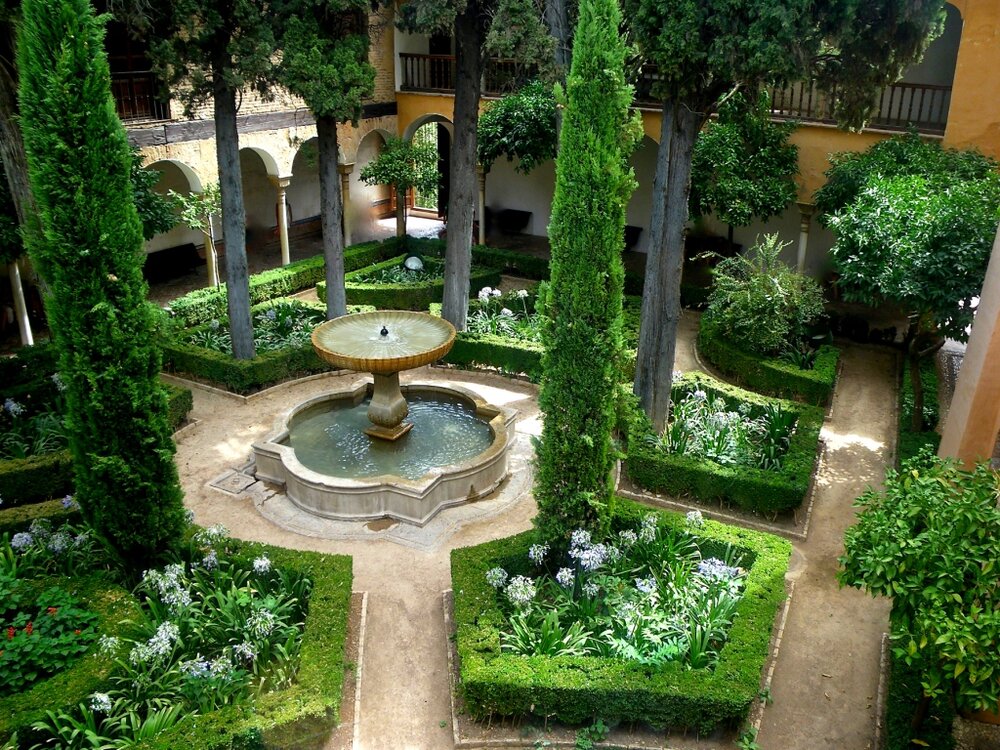
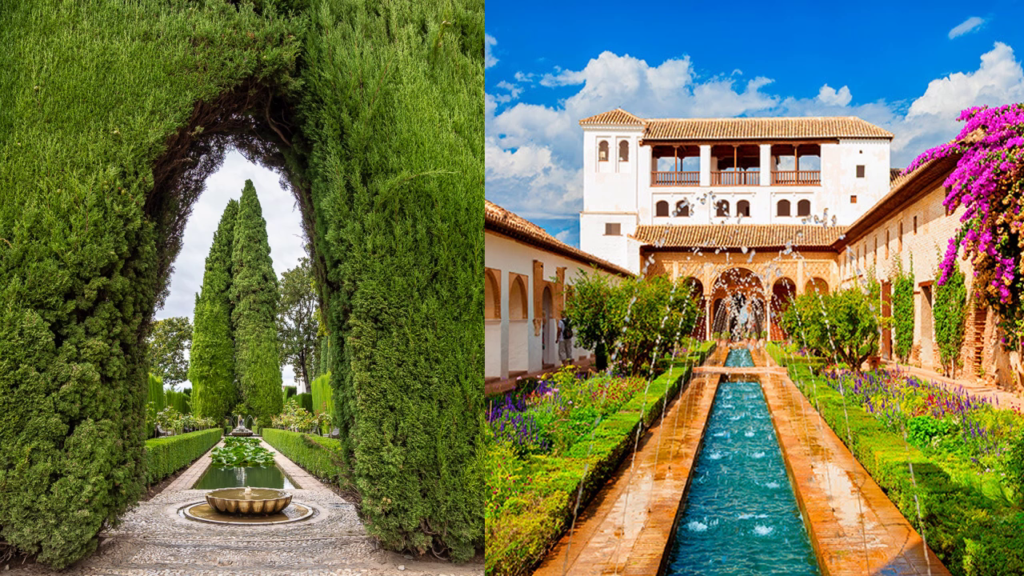
Architecture covered the walls of the palace with different kinds of attractive decoration and designs including the calligraphy. It became the residence for the Nasrid dynasty in 1200. Another attractive fact about the palace is that from the top of Al-Hambra, one can view the whole city.
The main hall which is now a museum for the visitors. Usually, people see and visit the throne room and central hall but very few tourists are aware of the fact that There are hidden underground secret ways beneath the palace which were built for connecting the outside world from the palace in case of any attack for the safe exit of the royals. Along with passage for fresh air to enter. Inside those tunnels, soldiers were always ready to respond in case of any danger inside the main hall of the palace. This underground secret place was discovered accidentally in 1907 through land sliding.
CORDOBA:
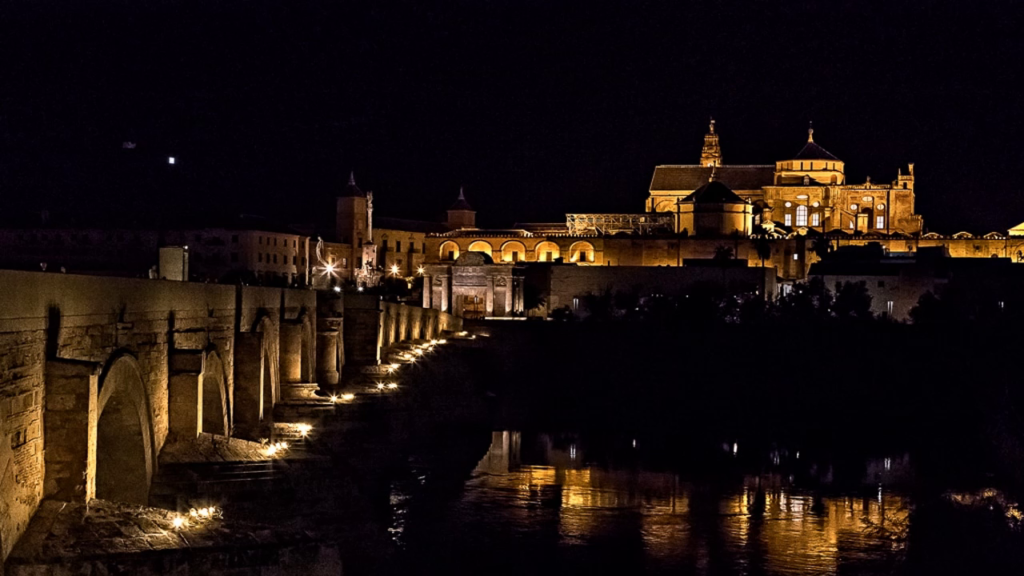
Cordoba was once considered as the centre of the civilizations and a blessing for humanity particularly in the field of medical science. Countless modern surgical instruments which are used today for operations were invented in Cordoba centuries back. Cordoba was the only “The City of Lights” having thousands of street lights during the dark nights in other parts of the world. The streets of the city were enlightened artistically in such a way that oil from which street night lamps were burned were mixed with atter (perfumed scent droplets) therefore, from sunset till dawn the whole Cordoba City was enlightened with a variety of different perfumed fragrances.
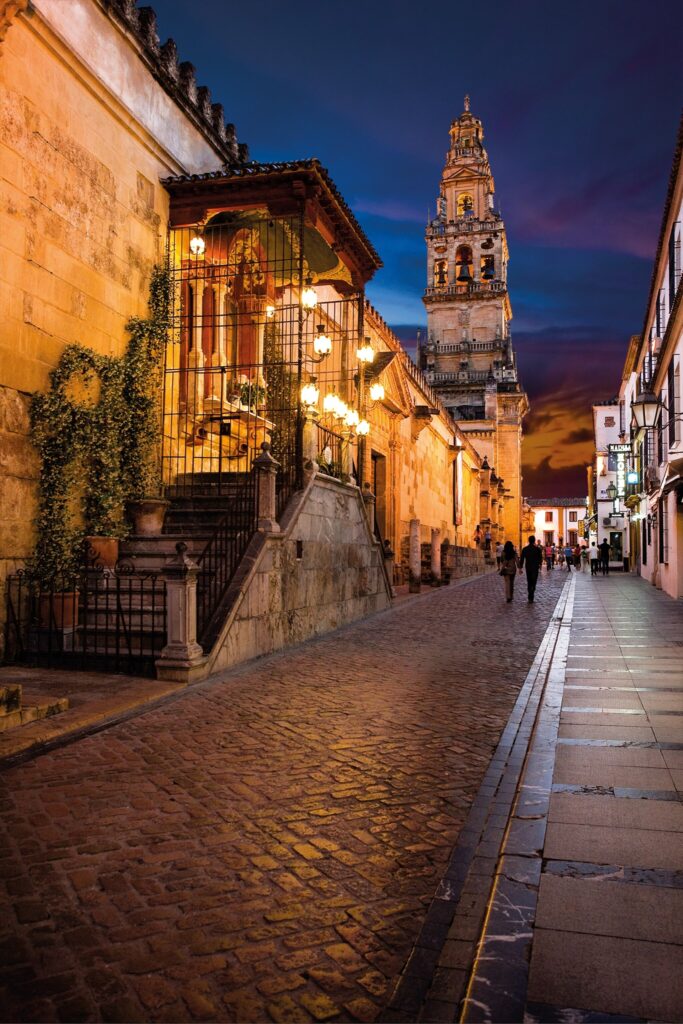
This city had over 50 hospitals and hundreds of libraries. Even the Caliph at that time had a personal library at home having more than 100,000 books. This shows how much learned society they had. Not only the citizens but also the Caliphs (Kings) of that period were fond of studying.
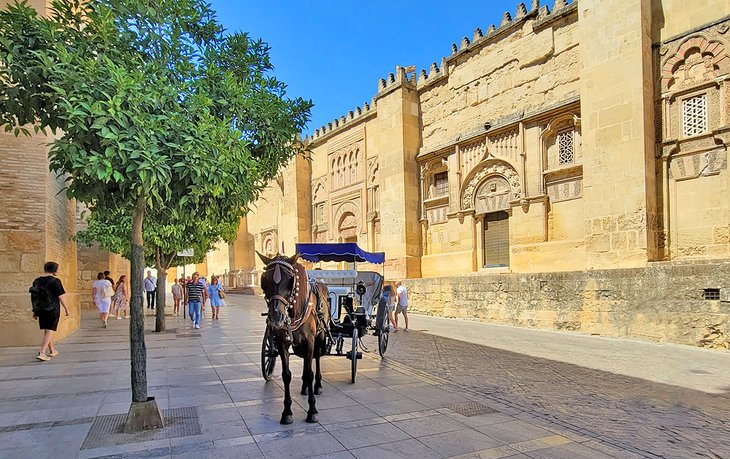
The people from that age did not only give beautiful monuments but also provided the development through introducing countless hospitals, universities, geometry, progress and a lot more.

“Museo vivo de Andalus” also known as Torre de Calahorra is a historical museum which is a must visit place for most of the tourists as it shows the surgical instruments invented by the scientists of that time.
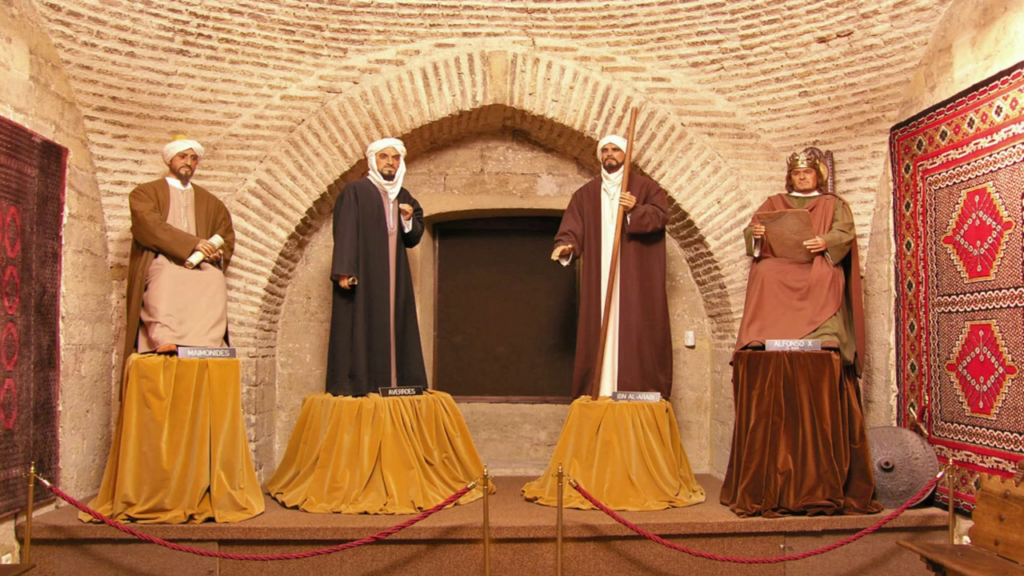
CORDOBA MOSQUE
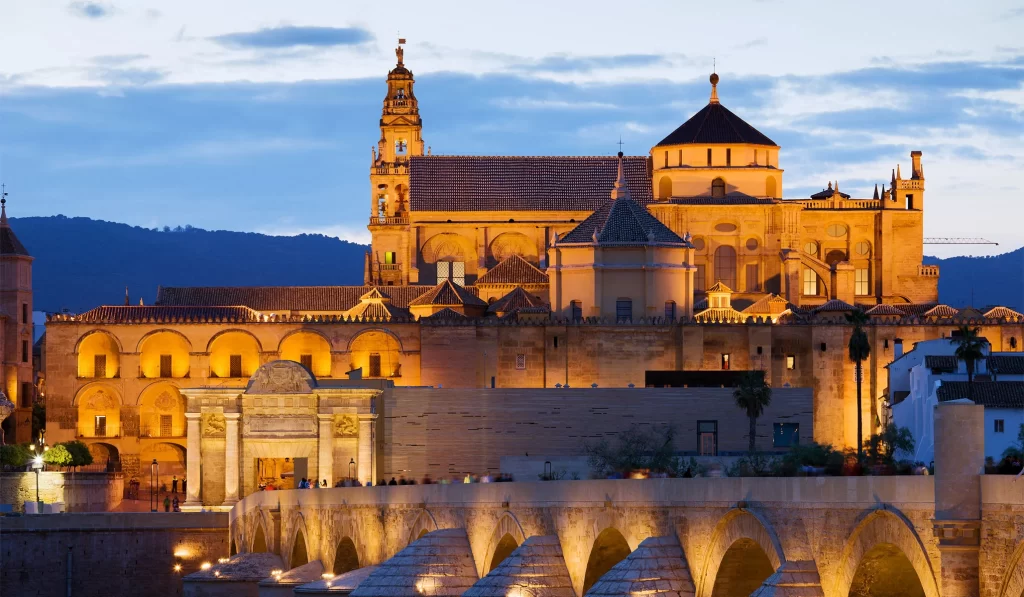
We enter the historical Mosque of Cordoba (Present day Cathedral) after crossing the famous Roman Bridge. The Cordoba Mosque is one of most visited Spanish historical Masterpieces and comes under UNESCO world heritage site and it is the second most visited place after Al-Hambra palace. The Mosque has a mehraab, prayer hall and beautiful Islamic architecture.
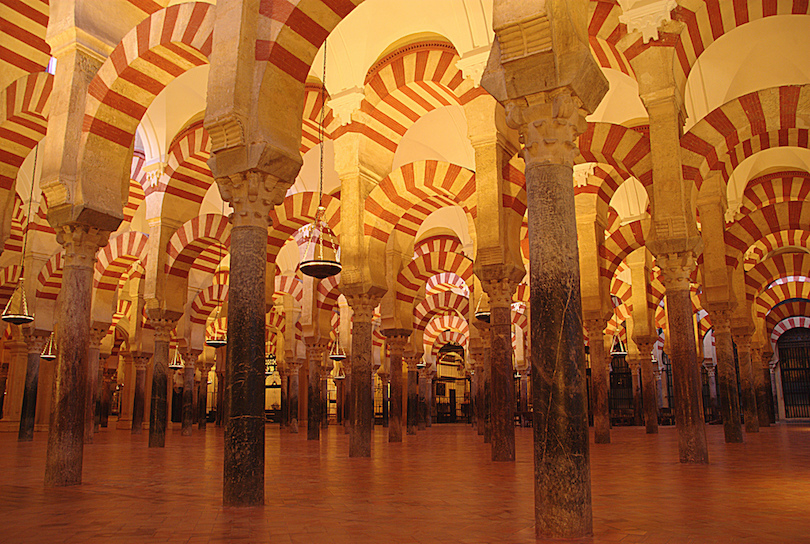
Even today, after 1300 years, at the place of mehraab, the last few verses from Surah Hashr, Holy Quran are written (embedded) in its original condition as it is.

This was not only a Mosque but was a learning centre for researchers from where countless renowned Muslims scholars and international researchers took birth.
TOLEDO:
The old city of Toledo is also known as the “The city of three Cultures.” The city was inhabited by Muslims, Jews and Christians. Therefore, it has the architecture, monuments and historical services of all three. Toledo was made a UNESCO World Heritage Site in 1986 for the cultural heritage and monumental masterpieces. This historical city also sets an example for human beings of today’s modern world how the people of three different religions Christianity, Islam and Judaism lived peacefully side by side during the 10th Century and also worked together to provide progress for humanity in the fields of medicine, geometry and architecture.
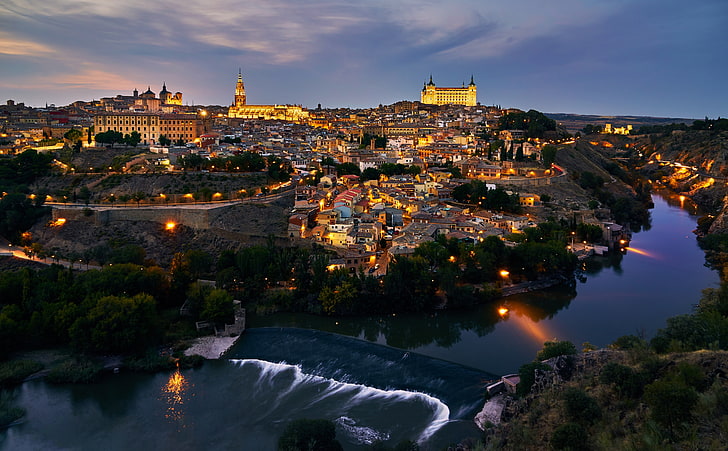
MOSQUE OF CRISTO DE LA LUZ:
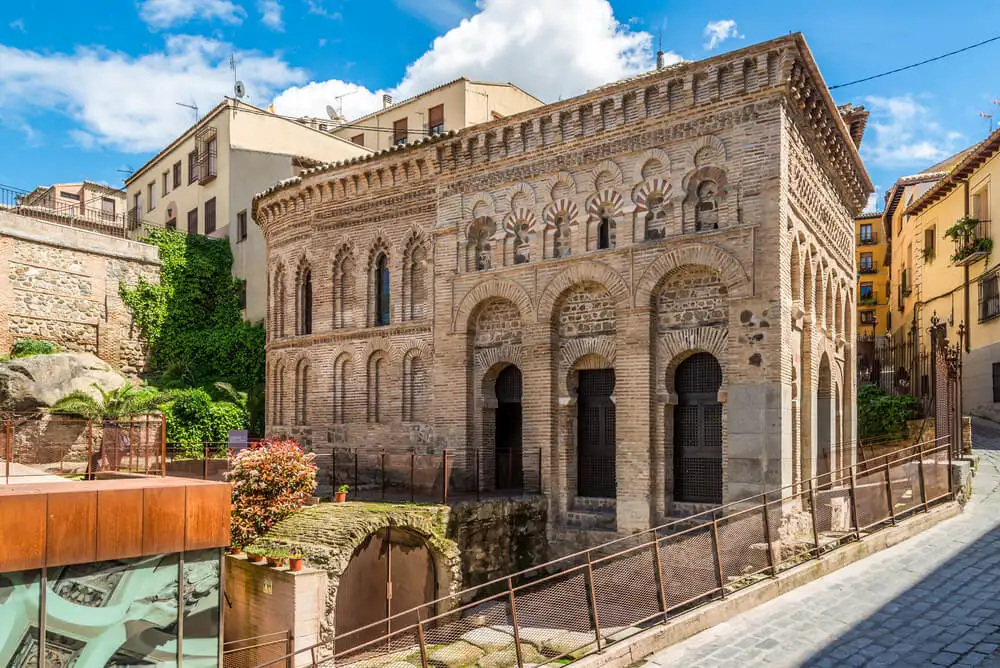
The Historical Mosque of Cristo de la Luz is a Catholic Chapel in present day, it was a Mosque once, back then it was known as “Mosque Bab-al-Mardum”. One of the historical architectures from the period of Muslim Spain still as it is even after ten centuries. Although the space inside the Historical Mosque is small, but it takes you almost a thousand years back.

SYNAGOGUE OF SANTA MARÍA LA BLANCA:
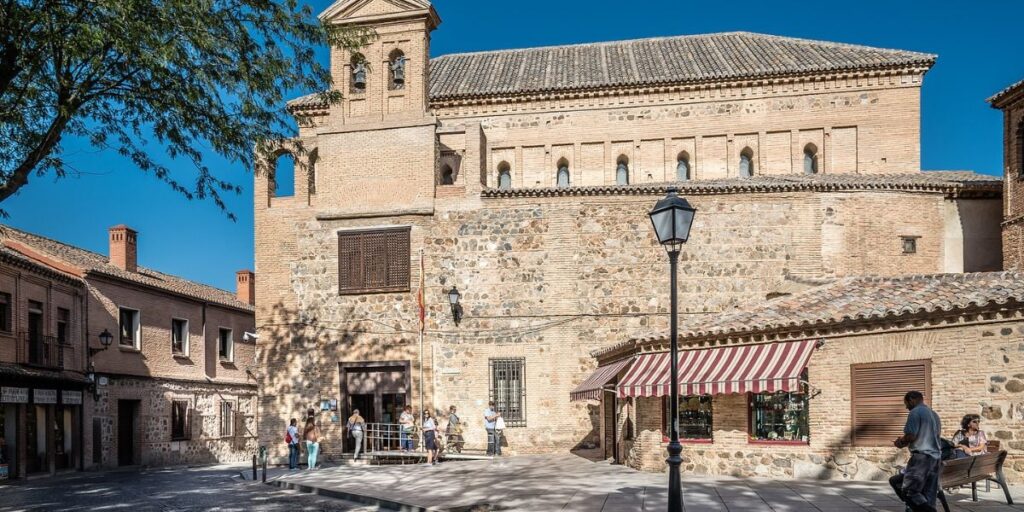
The Synagogue of Santa María la Blanca is a present day museum but it was once a beautiful Synagogue in Toledo. It was one of the three well-preserved Synagogues constructed by the Jews in the Architectural Style of Muslim Spain. The former Synagogue is located in the former Jewish Quarter of the city.
TOLEDO CATHEDRAL:
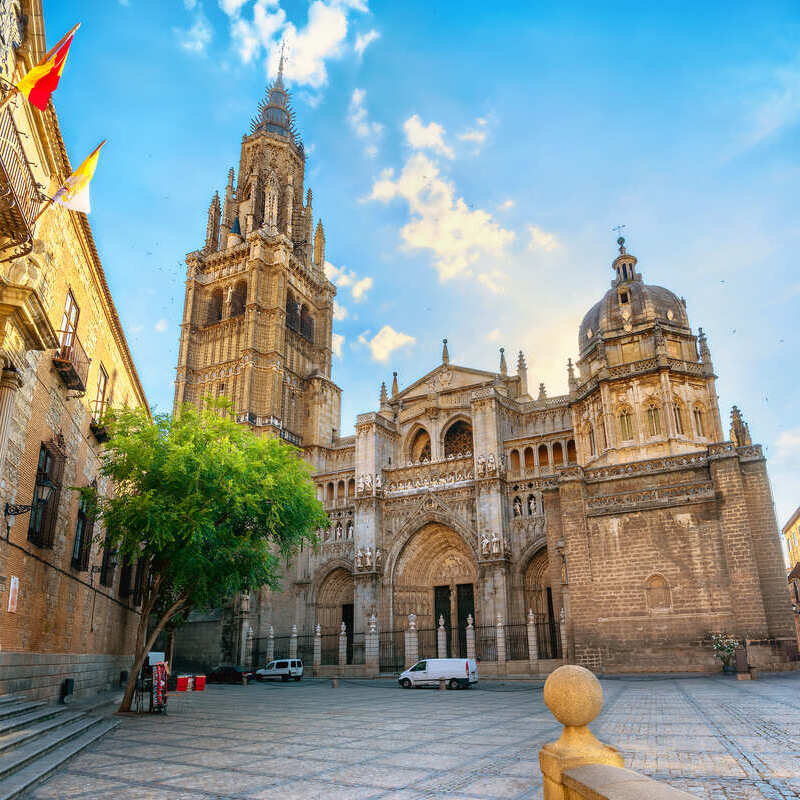
Toledo Cathedral is one of the most visited and historical Cathedrals in Spain. The Cathedral is famous for its superb artwork and Medieval Gothic Architecture.
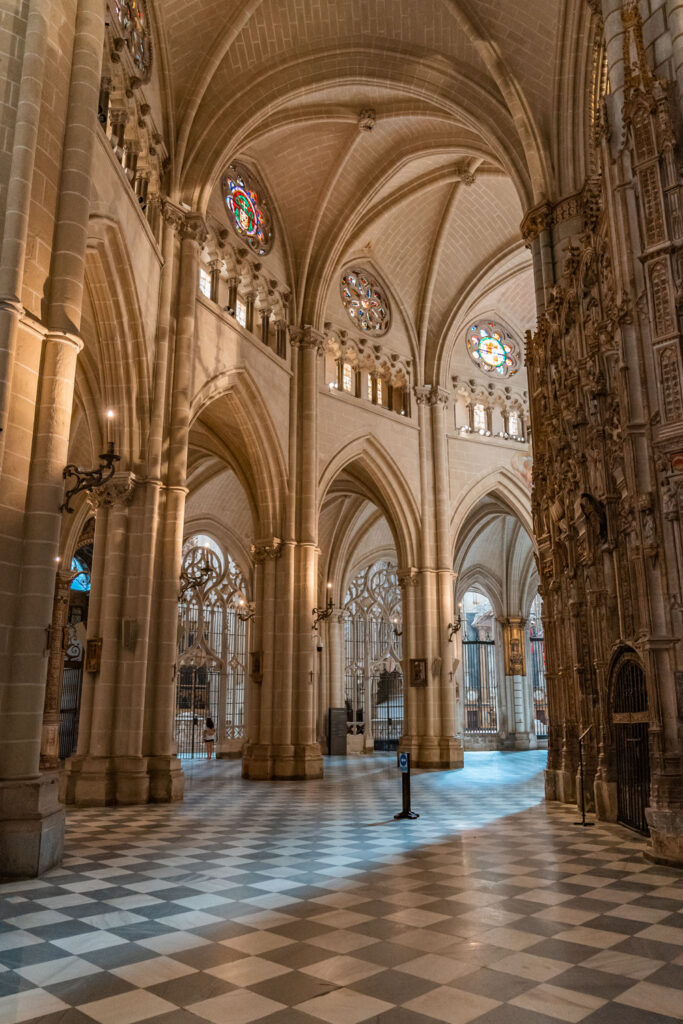
FLAMENCO:
Flamenco is famous as Spanish art throughout the world. Many researchers believe that Andalusian city of Granada in Southern Spain is known as the birthplace of flamenco. Flamenco is usually associated with the Gypsies of Andalusia. Even today, flamenco is sung in Spanish or with the combination of Spanish along with Arabic which results in attractive Hispano-Arab music. To visit and enjoy the live performance of Granada’s best flamenco, you can visit the old Roma gypsy district of Sacramento up in the hills at peak height of the city.
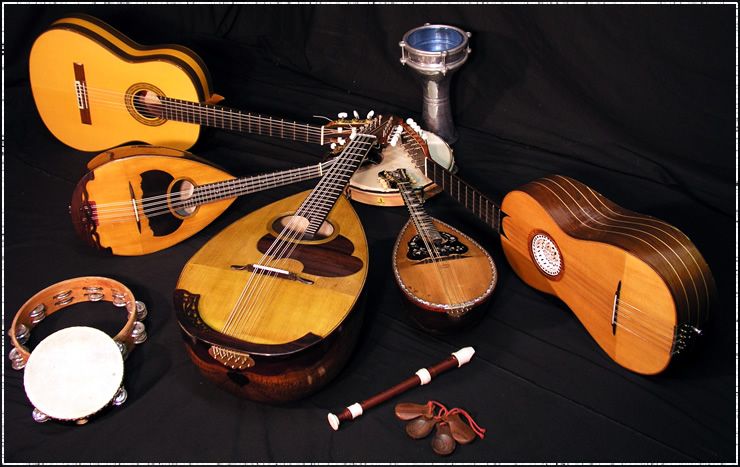
CONCLUSION:
These developments prevented Spain from falling into the dark ages, the whole Europe was a part of. The successful agriculture provided a strong base for the Spanish navy and later they were one of the very first to set themselves on the voyages of different states. The beautiful architecture is still admired by tourists from all over the world. The structures built by Muslims are still considered reliable. Those research books were a part of European academic syllabus for centuries.
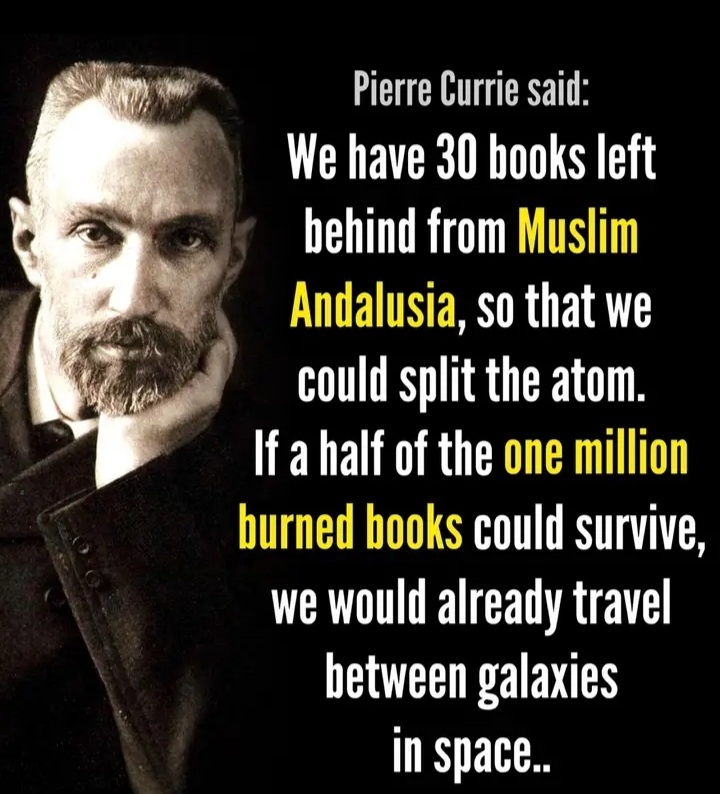
For all these above mentioned reasons, it’s not exaggerating if Muslim era is called the Golden Age of Spain.
A JOINT ARTICLE
BY
FARZEEN FATIMA & NABEEL RASHID
NOTE: We are thankful to the following for the research work.
Google arts and culture
BBC
Wikipedia
Encyclopedia Britannica
History of islam
Islamic Spain
https://www.wikiwand.com/en/Ibrahim_ibn_Said_al-Sahli
https://muslimheritage.com/abu-ishaq-ibrahim-ibn-yahya-al-zarqali-2/
https://www.ummid.com/news/2010/December/07.12.2010/contribution_of_muslim_scientists_3.htm
https://muslimheritage.com/people/scholars/al-bitruji/
https://muslimheritage.com/people/scholars/ibn-bassal/
https://www.touropia.com/mezquita-of-cordoba-the-mosque-in-the-cathedral/
https://en.wikipedia.org/wiki/Toledo_Cathedral
https://en.wikipedia.org/wiki/Synagogue_of_Santa_Mar%C3%ADa_la_Blanca
https://en.wikipedia.org/wiki/Mosque_of_Cristo_de_la_Luz
https://www.touropia.com/tourist-attractions-in-cordoba/
https://funci.org/science-in-muslim-spain/?lang=en
https://www.aljazeera.com/news/2008/1/28/made-by-muslims-2
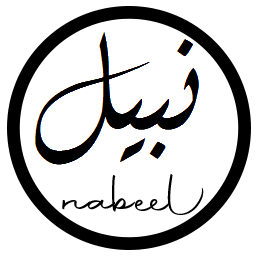
Nice article with countless knowledge.
Bravo! Beautifully presented a series of knowledge… well done. FARZEEN FATIMA and NABEEL RASHID SIR.
Nice detailed research and very well written. Loved reading it. Great work Miss Fatima and Nabeel Rashid..
Great collection of knowledge from Golden Age of Muslim Spain… thanks for sharing about the town under the mountain… that was really a new knowledge for me.
It’s a brilliantly captured piece of writing and visual pictures. Simply phenomenal ! And the details are a great reminder of the grandeur
Thanks Mam